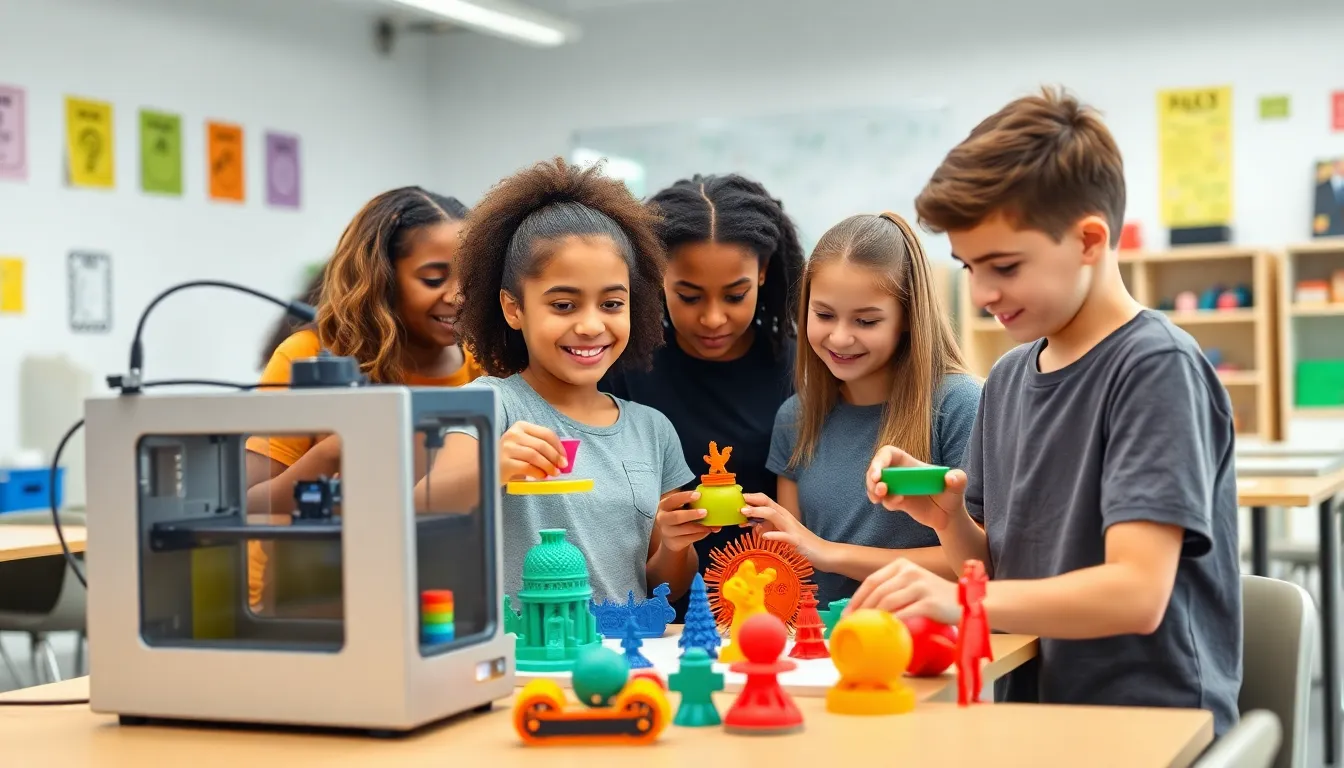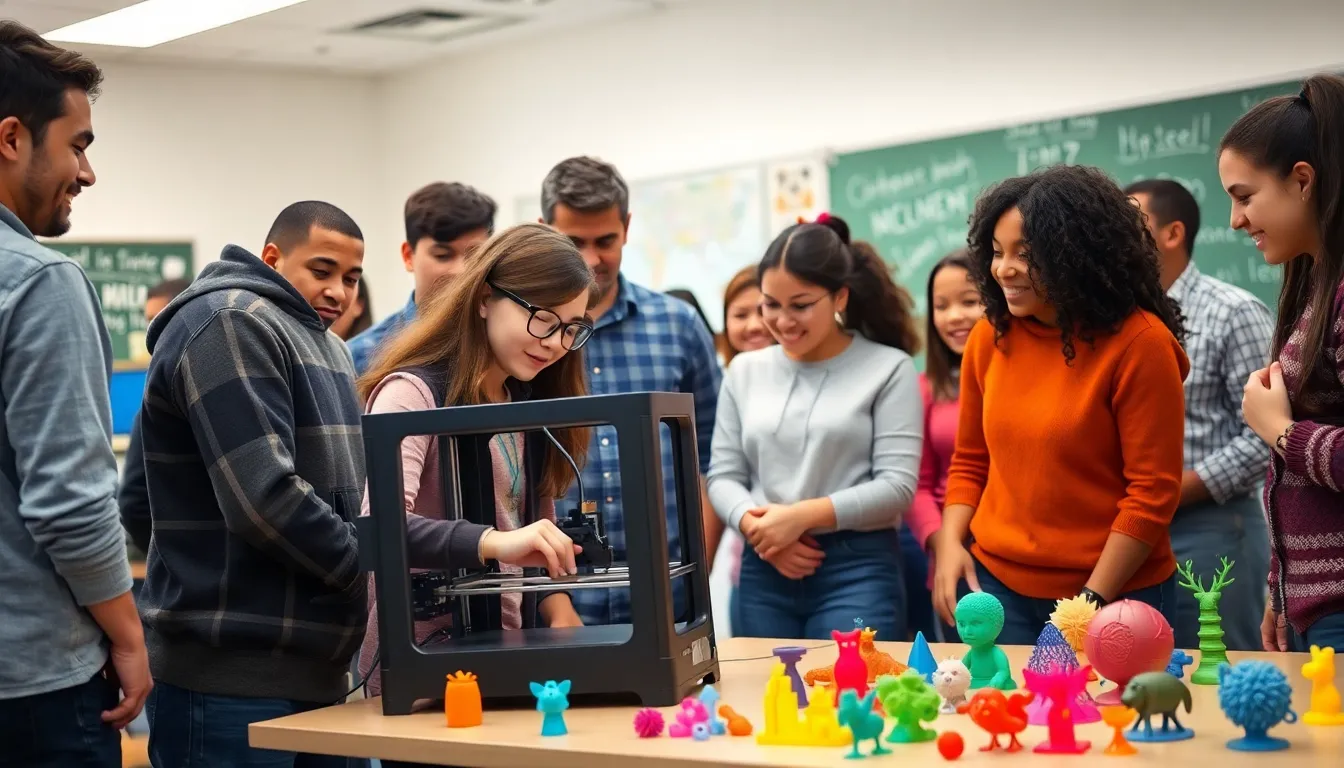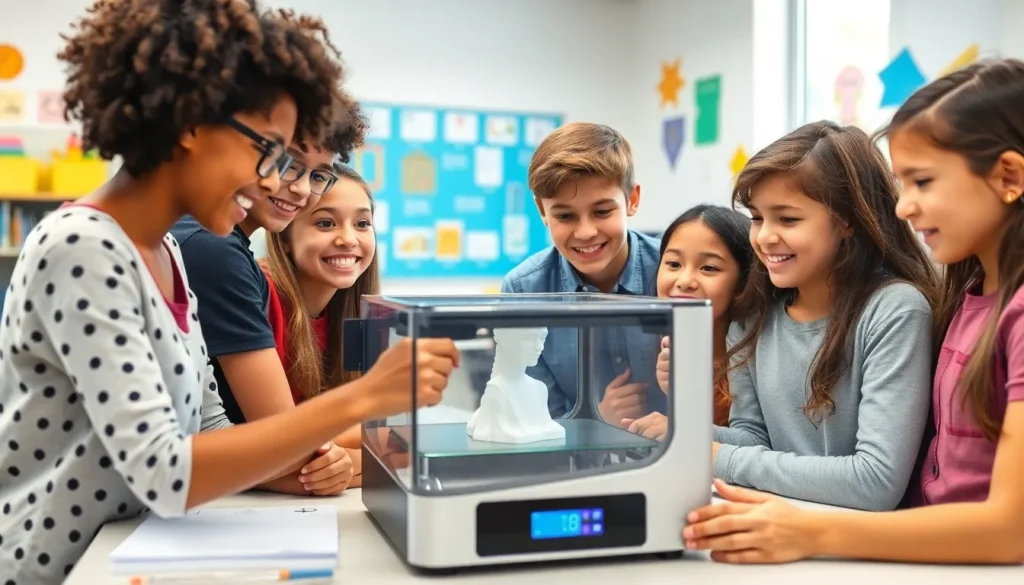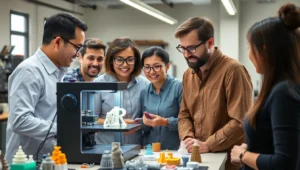Imagine a world where students don’t just learn about science and technology but actually create it. Enter 3D printer education, the magical realm where imagination meets innovation. These printers aren’t just for making quirky gadgets; they’re transforming classrooms into creative laboratories where students can bring their wildest ideas to life.
With the power of 3D printing, education gets a much-needed upgrade. Forget boring lectures and static textbooks. Students dive into hands-on projects that spark curiosity and enhance problem-solving skills. Plus, who wouldn’t want to brag about designing their own action figure or prototype? As schools embrace this technology, the future of learning looks not just bright but also brilliantly three-dimensional.
Table of Contents
ToggleOverview of 3D Printer Education
3D printer education revolutionizes the learning environment, emphasizing hands-on experiences. Students engage directly with technology, transforming theoretical concepts into tangible creations. Learning becomes interactive, enhancing understanding of science, engineering, and math.
Classroom integration cultivates creativity and critical thinking skills. By designing and printing their projects, students develop problem-solving abilities. They also learn about design software, materials, and the printing process, gaining practical skills applicable in various fields.
Teachers benefit from adopting 3D printing technology as well. This shift encourages collaborative projects, fostering teamwork among students. Resources such as lesson plans and online communities support educators in implementing 3D printing effectively.
Schools implementing 3D printers notice increased student motivation. When given the tools to create, students express enthusiasm for learning. Innovative projects capture their interest, leading to deeper exploration of subjects.
Various industries recognize the importance of 3D printer education. Engineers, designers, and manufacturers value the skills acquired through this type of learning. Preparing students for future careers in these fields highlights the long-term benefits of incorporating 3D printing in education.
Research shows that 3D printing enhances spatial awareness and visualization skills. These gained competencies are essential for success in STEM-related fields. Schools focusing on 3D printer education see improvements in student performance and engagement.
Benefits of 3D Printer Education


3D printer education offers significant advantages for students and educators alike. The integration of this technology in classrooms leads to notable improvements in various areas of learning.
Enhancing Creativity
Creativity flourishes in environments where students can experiment freely. With 3D printers, learners actively design and create their projects, allowing artistic expression to manifest in tangible forms. Each design process encourages innovation and originality, enabling students to explore concepts and ideas that traditional methods often restrict. By engaging in this hands-on creation, they discover unique solutions to challenges. Creativity becomes not just a skill but a process, fueling their passion for learning.
Promoting STEM Learning
STEM education benefits greatly from hands-on experiences offered by 3D printing. Students deepen their understanding of complex concepts in science, technology, engineering, and math through direct interaction with the materials and technology. Each project requires critical thinking and problem-solving, reinforcing lessons in a practical context. Research shows that students who engage with 3D printing exhibit improved spatial awareness and visualization skills, both vital for success in STEM fields. This approach to learning elevates motivation and enhances student performance, aligning with the demands of modern careers.
Key Components of 3D Printer Education
3D printer education involves several essential components that enhance the learning experience. Among them are curriculum development and hands-on learning experiences.
Curriculum Development
Curriculum development plays a crucial role in integrating 3D printing into educational settings. Teachers design lesson plans that align with educational standards while incorporating 3D modeling and printing projects. Specific objectives focus on skills such as design thinking, problem solving, and teamwork. A well-structured curriculum encourages critical thinking as students engage with technology. Schools benefit from collaborative projects that inspire creativity and innovation. Effective use of resources, including online tutorials, enhances educators’ capability to teach complex concepts through practical applications. Ultimately, a robust curriculum ensures that students gain the necessary skills for future STEM careers through 3D printing.
Hands-On Learning Experiences
Hands-on learning experiences significantly enhance the educational value of 3D printer education. Students actively participate in creating prototypes and models, which fosters engagement and curiosity. By manipulating design software, learners develop technical skills and conceptual understanding. Interaction with tangible materials during the printing process solidifies theoretical knowledge. Real-world projects allow learners to experiment with design changes, reinforcing the importance of iteration in engineering. Collaborative teamwork during these experiences encourages communication and collaborative skills. Such immersive learning opportunities empower students to connect classroom concepts to their creative ideas, leading to higher retention and deeper understanding of STEM subjects.
Challenges in 3D Printer Education
3D printer education faces several challenges that can hinder its effectiveness in the classroom.
Accessibility Issues
Accessibility concerns affect the integration of 3D printing in education. Many schools lack funding to purchase 3D printers and necessary materials, limiting access for students. Additionally, not all educational institutions have adequate space or technical infrastructure to support this technology. Geographic location can also play a role, as rural areas might struggle to access resources and training. Disparities in access to educational technology can widen the digital divide, impacting students’ learning opportunities. Addressing these issues is essential to create equitable learning environments where all students can explore 3D printing.
Skill Gaps among Educators
Skill gaps among educators present a significant barrier to implementing 3D printer education. Many teachers lack training in 3D modeling and printing techniques, making it difficult for them to guide students effectively. Professional development programs focused on these skills are crucial, yet often unavailable or underfunded. Limited familiarity with technology can lead teachers to avoid using 3D printers in their lessons altogether. Moreover, educators may struggle to align 3D printing projects with curriculum standards without proper support. Filling these skill gaps enhances confidence among teachers, promoting successful integration of 3D printing in learning experiences.
Future of 3D Printer Education
3D printer education continues to evolve, shaping the learning landscape for future generations. Innovations in this field promise to further enrich educational experiences.
Integration with Emerging Technologies
Integration of 3D printing with emerging technologies such as virtual reality (VR) and augmented reality (AR) enhances learning scenarios. These technologies create immersive environments, allowing students to visualize complex concepts in real time. Combining 3D printing with the Internet of Things (IoT) enables students to connect physical objects with digital information, fostering deeper understanding. Robotics, integrated with 3D printing, encourages collaboration between disciplines and enhances STEM curricula. The potential for greater engagement emerges as students navigate these technologies, creating a comprehensive learning experience that prepares them for the future job market.
Expanding Educational Reaches
Expanding educational reaches through 3D printer education provides opportunities for diverse student populations. Schools in urban, suburban, and rural areas can connect with online resources and communities, bridging gaps in access to technology. Partnerships between educational institutions and industry leaders can lead to resource sharing, including materials, training, and expertise. Additionally, integrating 3D printing into community programs supports lifelong learning, ensuring access to innovative tools for all learners. Global initiatives promote collaboration across borders, allowing students to co-create projects and learn from different cultural perspectives. This approach cultivates inclusivity and prepares students for a globally connected workforce.





